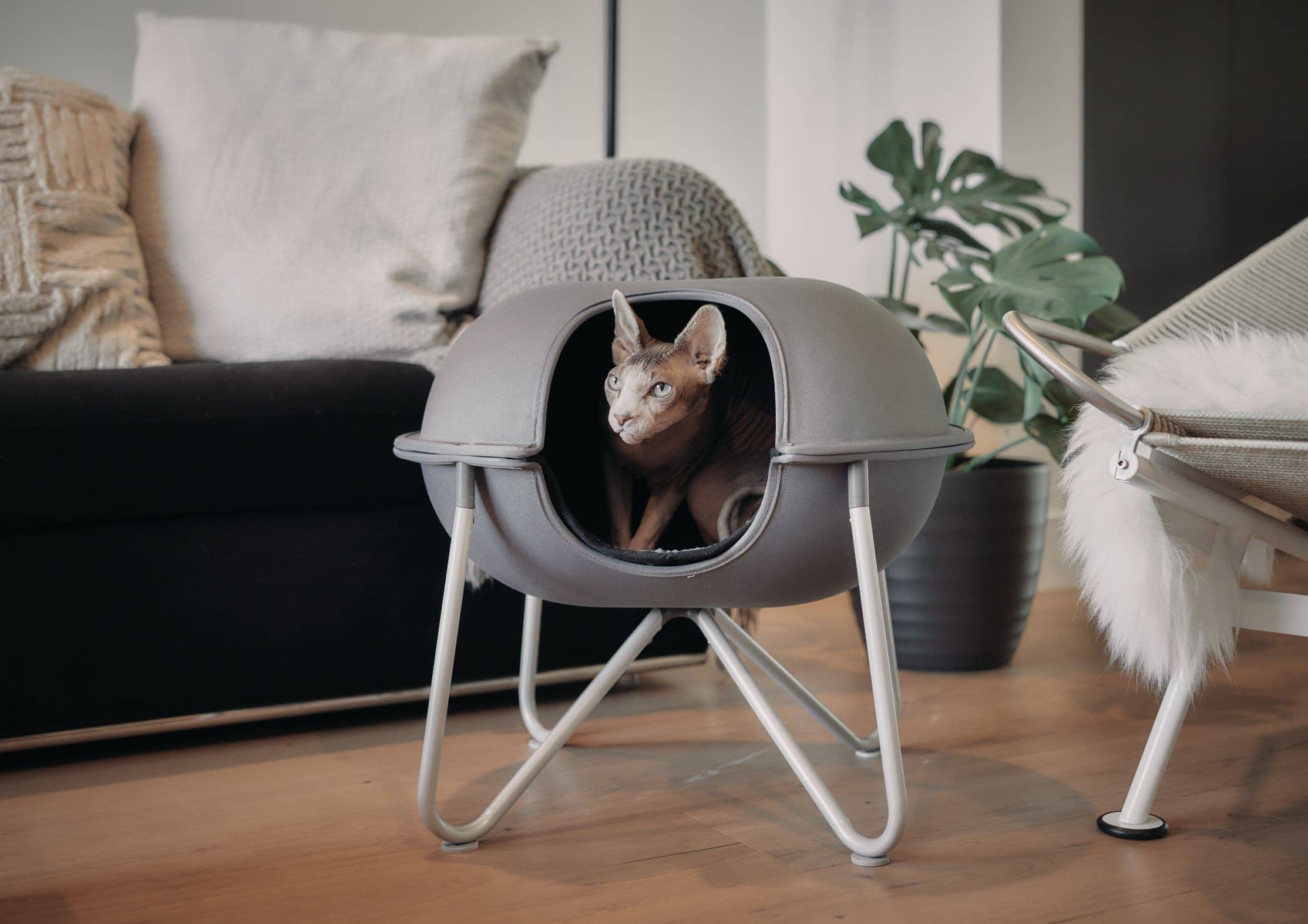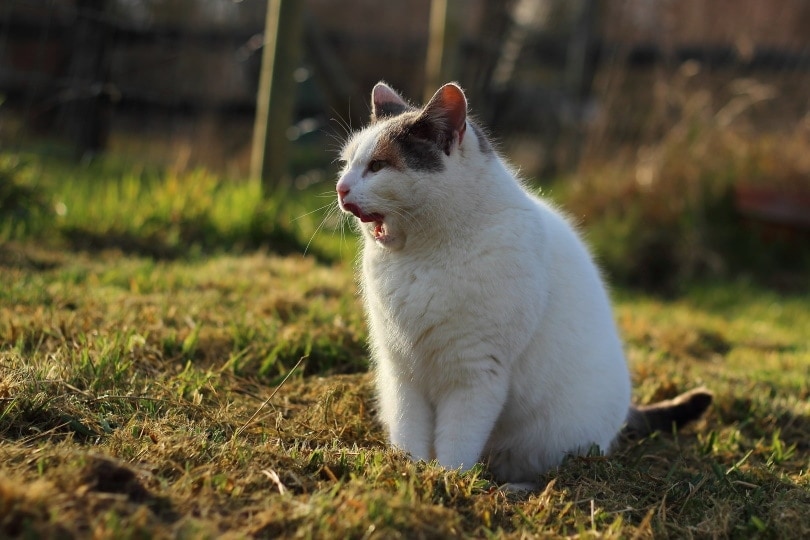How To Get Cat Pee Out of a Comforter in 3 Simple Steps

By Misty Layne
Updated on

While cats aren’t as notorious as dogs for having accidents around the house, you may still find, on occasion, that your feline has peed on something they shouldn’t have—like the comforter on your bed. And unfortunately, cat pee is a pain to get out of bedding, carpets, and clothing because it lingers and reeks.
Any lingering urine odors on your bedding can attract your pet into coming back and using it as a toilet again. Having a cat pee on your comforter once is one time too many, so it’s essential to remove it as soon as possible. But how do you manage that?
You can get the job done with the steps and sub-steps below. While the steps aren’t many, the process does require a fair amount of time. Once you’ve gone through them, though, your comforter should be as good as new!
Preparation
Before starting the actual clean-up process, you should ensure you have all the supplies you need on hand and within reach.
- Paper towels
- White vinegar
- Oxygen bleach
- Enzyme detergent
- Baking soda (optional)
Once you’ve gathered your cleaning supplies, it’s time to start getting the cat pee out of your comforter!
However, something to note is that you should never use a cleaning product with ammonia to get rid of cat pee. The smell of ammonia will smell like urine to your pets and might entice them back to your comforter for another go at using it as a bathroom.
How to Get Cat Pee Out Of a Comforter
Removing cat pee from your comforter is a three-step process; however, each of the three steps has mini-steps within.
1. Pretreatment
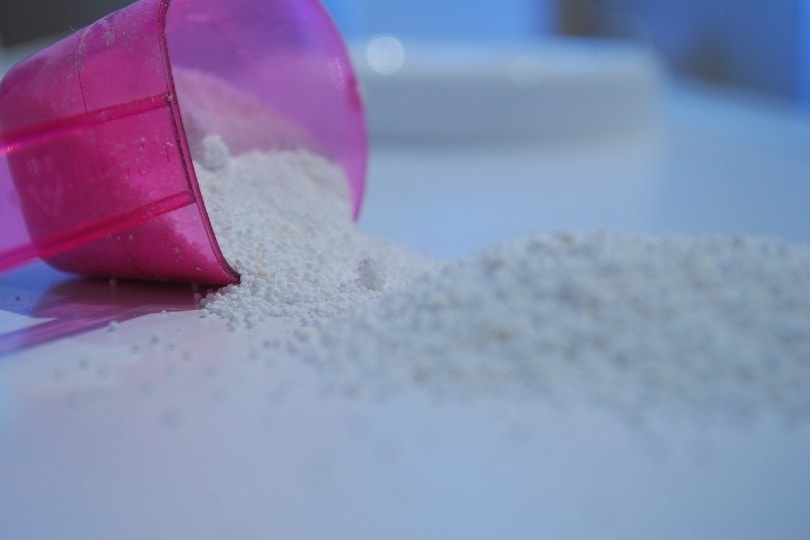
Unfortunately, you can’t just throw a urine-soaked comforter in the wash. Rather than removing the cat pee, you’ll likely find that the odor has set in. Not pre-treating the comforter could even result in an entire load of laundry smelling like pee!
This step is all about trying to get rid of as much of the cat pee as you can before actually cleaning it. Rinse the urine spot with cool water, then blot dry with paper towels. Don’t scrub! Scrubbing will only result in the stain being set deeper into your comforter’s fabric.
- Fill up a large sink or your bathtub with water and add a 1/2 cup of oxygen bleach. You do not want to use regular chlorine bleach as it could damage your comforter, so make sure you have the correct kind!
- Make sure the water and bleach are mixed well, then add your comforter and soak anywhere from 1 to 4 hours.
2. Wash In Vinegar
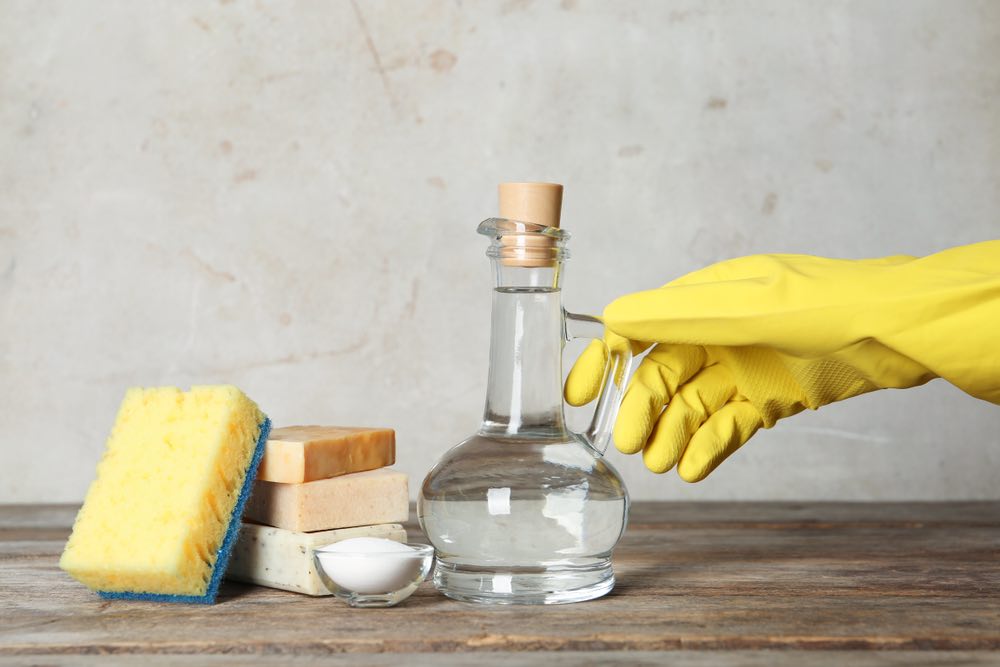
While you could throw your comforter in for a simple cold wash after the steps above, it’s recommended you do a wash in vinegar before running your comforter through the wash as usual. Simply laundering your comforter after getting rid of cat pee could result in the smell of urine lingering.
- Make a mixture of one cup of vinegar to three cups of water. Coat any urine stains on your comforter with this mix and let sit for 10-15 minutes.
- If you’d like, you can also put on some baking soda at this point as it will help neutralize the cat pee odor, but this step is optional!
- Once your comforter has sat with this mix for a bit, you can wash it using either lukewarm or cold water with no laundry detergent. Just make sure you don’t use warm or hot water as it could result in the stain setting.
- Once your wash is done, do not use the dryer. Like hot water, heat from the dryer can also set the stain and make the odor stick. Instead, air-dry your comforter. Be prepared for this to take a while!
3. Time To Launder!
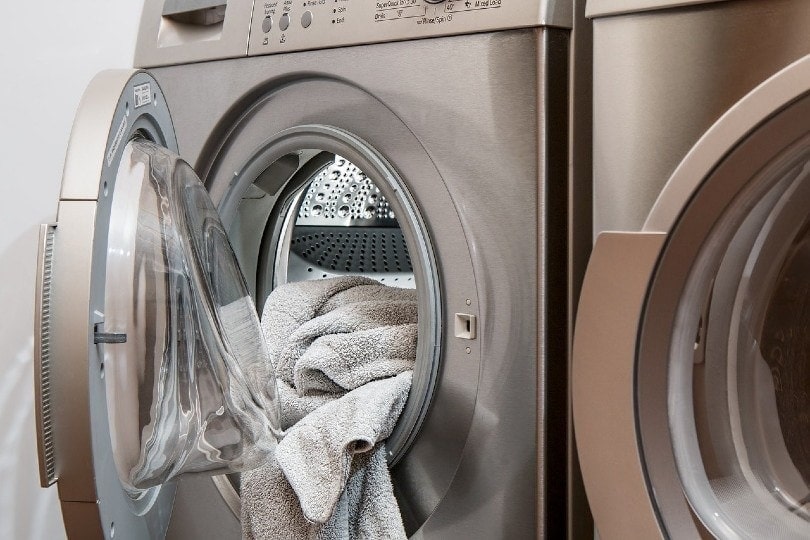
After pre-treating and doing the first wash with vinegar, most of the odor and stain from the cat pee should be gone from your comforter. That means it’s time to do a regular wash (if your comforter is dry-clean only, at this point, you can go ahead and take it to the dry cleaners).
- You still don’t want to use warm or hot water; aim for lukewarm at best. It’s also recommended that you use an enzyme-based detergent as enzymes will break down uric acid in cat pee, which will help in eliminating the odor.
- Once your comforter has completed its run in the wash, air dry it again. When dry, scrutinize it for any trace of odor or stain. The stain should be gone, but there is a chance that a whiff of cat pee smell could still be hanging around. If that’s the case, repeat the step above and rewash with cool water using an enzyme-based detergent.
Why Cats Pee on Beds
Now that you know how to remove cat pee from a comforter, it’s a good idea to look at the reasons cats pee on beds and outside the litter box in the first place. It’s an unusual occurrence, so it could be an indication that something is going on with your pet. Below are the most common reasons that felines stop using the litter box.
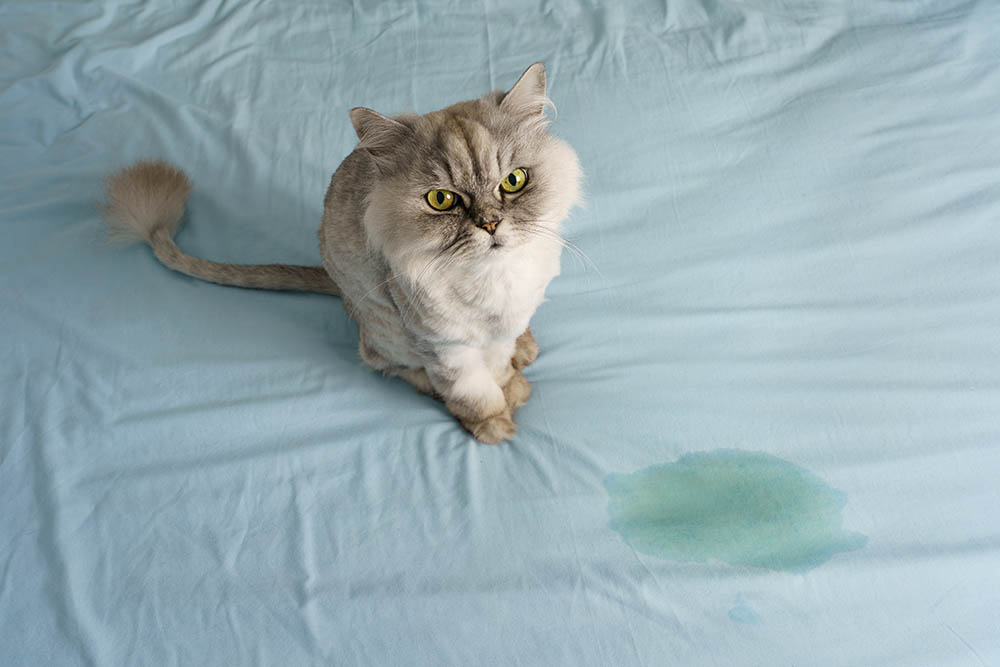
Arthritis or Joint Issues
As cats age, they can develop arthritis or other joint issues that make it harder for them to get around. So, if the sides of their litter box are too high, they won’t be able to get in to use it. Likewise, if their litter box is placed somewhere that requires a long journey, like if the litter box is upstairs when they spend most of their time downstairs. You may find them going to the bathroom where they can rather than risking pain or injury.
If your cat is dealing with arthritis or a similar issue, you may want to reconsider where its litter box is located and look into getting them a litter box designed for older kitties.
Other Health Issues
Arthritis and joint problems aren’t the only health issues that can result in urination outside the litter box. Many other health problems could cause this behavior—which is not to say that your cat has something physically wrong with them if they’ve peed on your comforter or elsewhere, only that it’s something you should investigate.
Medical conditions that can have your kitty going to the bathroom where they shouldn’t include urinary tract infections, hyperthyroidism, kidney disease, and diabetes. If you’ve noticed your cat having other health symptoms in addition to using the bathroom where they shouldn’t, it’s advisable to get them to the vet for a check-up.
Behavioral Issues
Your cat peeing on your comforter may not be related to their health at all. Instead, it could be a behavioral issue. Cats usually act out for a reason, so you’ll have to play cat whisperer and try to figure out what that reason is. Typical reasons include not enough litter boxes in the house, an overly dirty litter box, your cat not liking the litter being used, or your cat not liking where the litter box is.
It can be difficult to figure out, we know, but once you’ve deciphered the reason behind your cat’s behavior, you can intervene and resolve the issue.
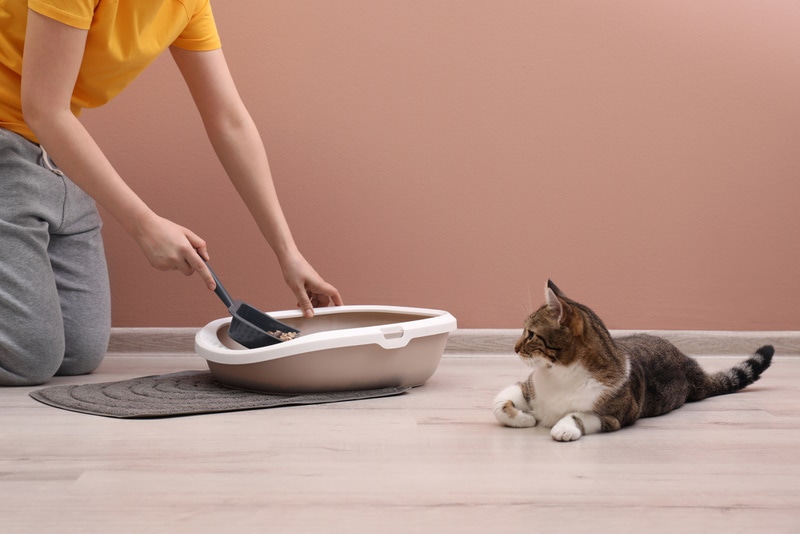
Conclusion
While it’s rare, there may be an occasion when your cat urinates on your comforter or elsewhere outside the litter box. If your cat does pee on your comforter, though, you’ll find that it’s relatively easy to get the cat pee out; it’s simply time-consuming. But with only three steps, you should be able to manage the job. And, whether it be due to a medical issue or a behavioral issue, once you figure out the reason for your cat’s behavior, you should be able to limit its bathroom habits to the litter box where they belong.
Related Reads:
- How to Start a Cat Café: Step-by-Step Guide
- How Many Bones Do Cats Have? The Skeletal Anatomy of a Cat
- How to Tell if a Cat Has a Fever? 10 Signs & Symptoms to Look For
Featured Image Credit: sabinafeldman, Pixabay




